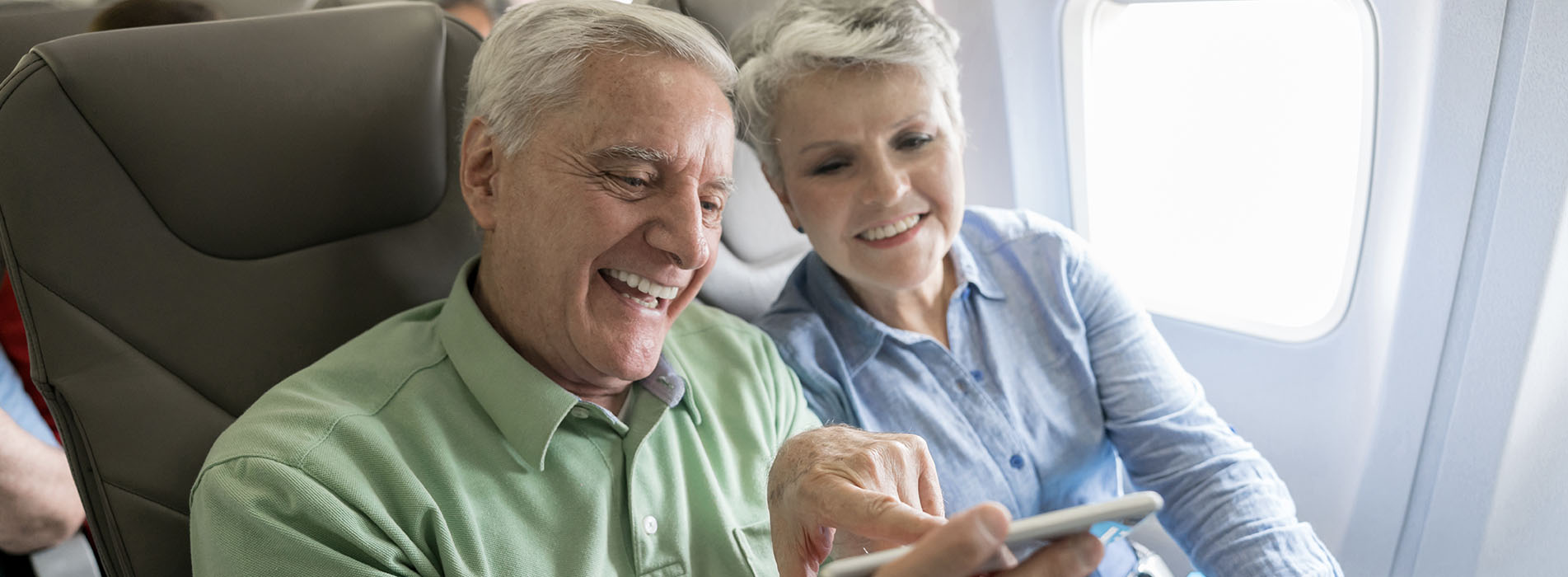Have you lately gotten the urge to fly to some exotic location, or even to permanently move away from all the local congestion? The fatigue and stress of travel, or moves, can be greatly lessened by carefully planning ahead. Start with the basics. Review breathing techniques and panic control, always helpful these days in an airport. Make an appointment with your physician. If you use oxygen, or think you might need it at high altitude, read our article on Altitude, Flying and Oxygen. Make a long check list and then have fun planning for your best trip ever!

Important Tips for Flying and Traveling
In Advance:
- Review your documents, such as insurance, passport or updated drivers license, and consider purchasing trip cancellation insurance.
- Request at least twice the amount of medications you will need. Get duplicates of physician prescriptions, letters for the oxygen company and airlines, and names of physician contacts at your destination. Check immunization needs, get your medical summary, and discuss need for additional prescriptions for medications such as prednisone, antibiotics, inhalers or even diarrhea medication, especially in case of problems with congestion and exacerbations.
- Destination concerns to check for are: altitude, humidity, pollens, and air pollution. Be sure to remember addresses and phone numbers needed on arrival.
- Check with the airline you will be using several weeks in advance. Request a seat near the bathroom. Give yourself plenty of time to move through the airport: typically 2 hours in advance of a domestic flight and 3 hours in advance of overseas flight is recommended. It is now suggested you also request a wheelchair, at least 72 hours in advance, to assist you getting to your gate and to pick you up at arrival. You don’t need one? Yes, you do! That wheelchair will enable you to avoid standing in those long lines, and also get you through security, and prevent much of the fatigue, stress you want to avoid.
- Holiday warning: Allow for an even earlier arrival time during holidays, especially if you are flying from our local airport at LAX!
- Once on the plane be prepared for humidity as low as 4 %. Dried out mucous membranes can increase your susceptibility to infections. A saline nasal spray might be helpful. Avoid dehydrating drinks such as alcohol, coffee and some soft energy drinks but do drink plenty of water! If you have a cup of hot tea, inhale the steam before drinking it. Tea also has a small bronchodilator effect so is especially nice to drink. Be sure to carry your medications and inhalers with you. You can no longer carry bottled water through security at airports, so bring an empty bottle that you can fill, once through security or purchase a bottle of water, so you can stay hydrated and take your medications.
- Be reassured that every plane is required to have several pieces of medical equipment on board, including a blood pressure cuff, resuscitation device, CPR mask, automated external defibrillator (AED) and some medications, such as antihistamines, aspirin, epinephrine, a bronchodilator and others you probably won’t need.
- Seats are very cramped, unless you splurge on business class. We used to suggest getting up and walking around the cabin at least once an hour to prevent the formation of clots in the sluggish blood flow in your leg veins. Those clots breaking off could cause a life-threatening pulmonary embolism. In crowded cabins, walking about is almost impossible. But, you do need to keep moving! If stuck in your middle seat do leg lifts, walk in place, contract the calf muscles or do ankle exercises by making circles with your ankles. That is my favorite plane exercise. Besides preventing blood clots, it helps your ankles stay slim and trim! Or, it might cause a helpful neighbor to pat you hand and say “Don’t be nervous, dearie” as has happened to me. Also helpful are occasional shoulder rolls, and turning your head from side to side.
Have we covered everything? Probably not. The Pulmonary Hypertension Association has some good information about flying that is relevant to anyone with heart or lung disease, not just those with pulmonary hypertension. And we welcome additional information from readers – just send us an email!
Happy Travels!
Mary Burns, RN, BS
